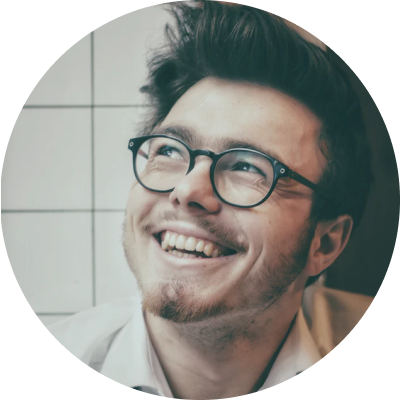Color conversion is prevalent in various industries, including textile, manufacturing, design, printing, digital media, etc. The problem is that organizations and individuals often encounter different color systems during their workflows. They must combine these colors to make them usable and get the desired quality.
However, you can’t convert all color systems with 100% accuracy because they don’t have the exact one-to-one values. Benjamin Moore and Pantone colors aren’t compatible, and you must take extra steps to convert them correctly.
We’ll discuss everything you need to know about converting Benjamin Moore colors to Pantone and how to do it correctly.
In this article
Why It’s Beneficial to Convert Paint Colors for Branding and Design Elements

It’s crucial to convert paint colors for branding and design for several reasons.
First, colors can be different on print and digital screens. Converting paint colors helps ensure consistency on digital platforms and physical materials.
Colors are a significant part of brand recognition. It’s essential to ensure consistency with branding visuals to make it easier for potential customers to remember and recognize your brand.
Global brands must consider color perception in different cultures. That’s why they sometimes must convert and adapt colors to local cultural preferences to ensure consumers perceive their brand positively.
Another reason converting paint colors is an excellent idea is the flexibility and versatility this conversion gives to designed elements. Designers can use color palettes to create cohesive designs that they can adjust for various uses.
Understanding the Benjamin Moore and Pantone Color Systems

Benjamin Moore is one of the best-known paint brands in the US and has been around for over 100 years. The company started in 1883 and has been a leading coating, stain, and paint producer.
Benjamin Moore’s paints have industrial, commercial, and residential purposes. The Benjamin Moore color system includes a set of identification methods and proprietary color formulations.
The Pantone color system is prevalent in manufacturing, printing, and graphic design. The Pantone company created it, making it a standardized color system with thousands of colors. Each has a unique identifier, making it seamless to match and reproduce the colors and access different materials and media.
Colorize black-and-white photos with AI technology, and restore photos of 6 different photo formats: JPG/JPEG/PNG/BMP/WEBP. Also fix the scratches and stains in the pictures using AI.

Main Differences Between Benjamin Moore and Pantone

Each of these color systems is unique. Here are some of their primary differences.
Application
Benjamin Moore colors are primarily suitable for paint, including interior, surface, and wall painting for commercial and residential purposes. Pantone colors are for textiles, manufacturing, printing, and graphic design. They’re crucial for ensuring consistency with different applications.
How Colors Are Formulated
Benjamin Moore’s colors are formulated for coating and painting while considering factors like the quality of the color depending on the surface, texture, and sheen. Pantone colors are a set of standardized values for various media and materials.
Color Identification
Benjamin Moore’s colors have numbers and names. Every color has a unique identifier with a matching formulation within the Benjamin Moore color library. Pantone has a numbered system that uses distinctive alphanumeric codes for every color. These codes are universal identifiers for all color variations within the system.
Benjamin Moore to Pantone Conversion – Notable Challenges

Converting Benjamin Moore to Pantone colors can be challenging because there are distinct differences between their applications and color systems.
- Different formulation methods: Benjamin Moore colors are specifically designed for printing applications, so they have characteristics like coverage, sheen, and texture. On the other hand, Pantone colors are standardized options for different media and materials. Converting between these two color systems might result in missing the qualities of Benjamin Moore’s colors.
- Surface and material differences: Paint colors differ depending on the surface because of substrate type, texture, and lighting conditions. Pantone colors are standardized and might lead to variations. Benjamin Moore colors are for coatings and paints, while Pantone colors are suitable for plastics, fabric, and paper. The differences in intended surface and material can lead to challenges in conversion (depending on the application).
- A limited number of Pantone colors: The Benjamin Moore color system has an extensive range of paint colors, while Pantone has fewer colors within its library. Converting one Benjamin Moore color to its Pantone counterpart can produce an accurate result but not an exact variation.
- Finish differences: Benjamin Moore colors have different finishes, including satin, eggshell, flat, etc. They change the final appearance of the surface. Pantone colors can’t account for these slight differences. Achieving a precise match in terms of finish and gloss can be challenging.
How to Convert Benjamin Moore Paint to Pantone

When converting Benjamin Moore paint colors to Pantone, you can’t expect a simple one-to-one conversion because of different variations in texture and sheen and their intended applications. However, you can take several steps to get a close match.
Use Color Swatch Books of Both Color Systems
First, select a suitable swatch book aligned with your needs and industry, and familiarize yourself with how it organizes colors. Then, use color codes and numbers to find the most similar variations for both color systems.
Consult the swatch book to find contrasts, compare shades, and test them in various lighting conditions to choose the most appropriate colors.
Use a Digital Tool to Match Colors

You can use various color-matching programs to match colors for accurate conversion. Many graphic design tools also have color-matching features.
Therefore, use those solutions after converting to see if you have a match. You can also use the reverse matching approach to find the best possible color variation for conversion.
Consult Designers to Get an Accurate Color Match
For those sensitive and critical situations where you must get an accurate conversion and match colors, consider talking to a professional designer or a color professional.
These experts have extensive experience in color theory, know how colors interact with different materials, and understand how they look in digital environments. They can help you use suitable matching instruments and get the most accurate results.
Identify the CMYK and RGB Values of the Colors

Pantone offers bridge guides that directly compare Pantone colors while displaying their hex, RGB, and CMYK values. They won’t give you the direct Benjamin Moore colors, but you can use them to find the most accurate Pantone equivalent by visually comparing variations.
You can use various online color conversion tools working with Pantone to provide the exact values in other color systems and ensure no mistakes when comparing similar colors.
Cross-Reference Digital Libraries
Digital libraries give visual color representations that let you cross-reference colors and use your vision to match them.
Digital libraries are accessible and often integrated into design tools, making them convenient for cross-referencing colors quickly. They are also consistent across design tools and platforms, ensuring you will always get the correct color no matter where you use it.
Adjust and Fine-Tune Colors

Take the time to work on the colors before converting them. Sometimes, it’s all about the quality, and you can make an accurate conversion but get poor representations. If working with black and white images, you can use tools like Wondershare Repairit Online Photo Colorizer to utilize AI and colorize pictures quickly.
On the other hand, digital libraries with visualization tools can help you understand how a Pantone color will look after the application. That can help you select the correct variation before converting and using a specific color.
Conclusion
Remember that getting a perfect match when converting Benjamin Moore to Pantone colors isn’t always possible. The differences between applications and color systems make getting 100% matches for specific color variations impossible.
However, the tips above will help you get near-identical color results that you or your customers won’t notice. It’s all about taking the time to review the additional steps we’ve mentioned. Good luck!


 ChatGPT
ChatGPT
 Perplexity
Perplexity
 Google AI Mode
Google AI Mode
 Grok
Grok

